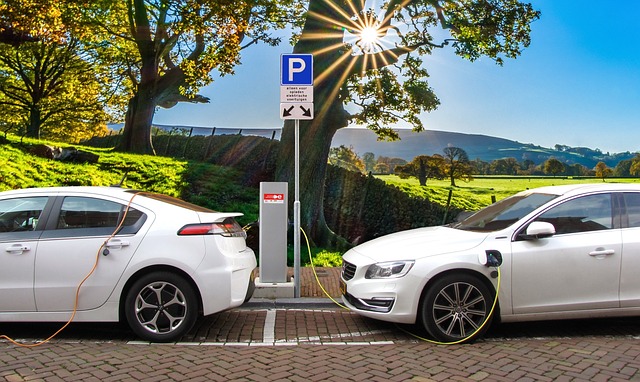The Biden administration has introduced new regulations aimed at reducing vehicle carbon emissions and increasing electric vehicle (EV) sales, marking what officials describe as the most ambitious effort to curb greenhouse gas emissions from passenger vehicles in US history.
These new standards, while relaxing some proposed limits on tailpipe emissions from last year, are set to eventually align closely with the stringent standards initially outlined by President Biden’s Environmental Protection Agency (EPA).
With EV sales in the US showing signs of slowing down, the EPA’s announcement on Wednesday outlined a path forward, stating that the automotive industry could meet emissions targets if 56 percent of new vehicle sales are electric by 2032, alongside a minimum of 13 percent comprising plug-in hybrids or other partially electric vehicles, as well as more fuel-efficient gasoline-powered cars.
Also Read: Gurner Reveals Ambitious $1.7 Billion Plan to Transform Docklands into a Wellness Utopia
Last year, EVs accounted for 7.6 percent of new vehicle sales, a slight increase from 5.8 percent in 2022. The EPA estimates that these new regulations could prevent over 7 billion tons of carbon emissions over the next thirty years, with significant annual economic benefits including reduced healthcare costs, fewer pollution-related deaths, and billions saved in fuel and maintenance expenses.
President Biden, known for prioritizing climate change action, hailed the move as “historic progress” towards his goal of making half of all new cars and trucks sold in the US zero-emission by 2030.
The EPA’s new regulations, applicable to vehicles with model years from 2027 to 2032, mandate significant reductions in greenhouse gas emissions and other pollutants from passenger cars, light trucks, and utility vehicles. Transportation accounts for approximately one-fifth of US greenhouse gas emissions, with cars and trucks contributing over half of that total.
While the final standards represent a compromise, scaling back the initial proposed targets for 2027 through 2029, EPA Administrator Michael Regan assured that the new rules will still achieve or exceed the pollution reduction goals set out in the agency’s proposal. The standards aim not only to reduce carbon emissions but also to mitigate other harmful air pollutants linked to respiratory illnesses and cardiovascular problems.
The adjustments to the EPA’s proposed rule appear to address industry and union concerns regarding the accelerated transition to EVs, as well as public hesitancy towards embracing new technology fully. The Alliance for Auto Innovation welcomed the slower implementation, emphasizing the importance of a reasonable pace for electrification during this critical transition period.
However, there are concerns that the revised standards may fall short of the US’s commitments under the Paris Climate Agreement. Environmental groups generally view the regulations positively for their potential to significantly reduce vehicle pollution, but some fear that loopholes could undermine their effectiveness, allowing the continued sale of high-emission vehicles.
Republicans have criticized the new standards, arguing against what they perceive as the government dictating consumer choices. Despite these objections, the EPA asserts that the regulations provide flexibility for manufacturers and do not mandate specific technologies, emphasizing compliance with statutory authority and legal frameworks.
Also Check: United Airlines MileagePlus












More Stories